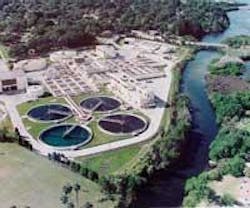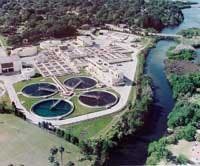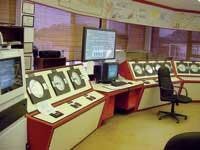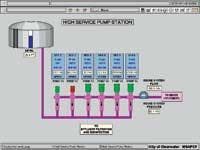New Integrated Network Includes Automated Reporting
The City of Clearwater, FL, faced the challenge of collecting and integrating data from three water treatment facilities, three wastewater treatment facilities, the distribution and collection systems, the LIMS system, and the maintenance management system. The city also wanted to generate daily reports based on that data.
The city selected a system that allows authorized users to access all control plant and RTU data from any screen. The integrated network includes a reporting system that allows staff to easily link to the CMMS and LIMS systems.
Clearwater has a state-of-the-art water treatment system to provide over 100,000 residents with safe drinking water that is vital to prosperity and health of the community. In addition, environmentally proactive wastewater collection with very high standards enables the city to provide reclaimed water for reuse in the community.
The city’s Water Division has invested millions of dollars in its treatment and distribution systems to ensure quality drinking water for future generations. Projects like the Reverse Osmosis Water Treatment Plant help secure an adequate water supply and the Water Conservation Program encourages environmentally friendly water use. Recycling of water is a priority. In addition to a separate distribution system for reclaimed water, the network of pipes has been expanded to accommodate growth. Currently, 48 of the city’s 75 pumping stations are being upgraded.
Linking Different Systems
The city’s drinking water and wastewater treatment plants all use Allen-Bradley PLC5 PLCs and Allen-Bradley Flex I/O Devicenet Networks. The Devicenet Networks were installed to collect analog signals for analyzers that were added to the plants over the years and never connected to the SCADA system.
The biggest challenge was tying these systems and hardware into one integrated system. Data communication occurs over fiber-optic Ethernet highway and spread spectrum radios for wells and RTUs. The firm of McKim & Creed installed CitectSCADA servers in the plants to connect to the Devicenet networks. The configuration is a master and redundant backup. CitectSCADA’s built-in redundancy enables the system to withstand any single point of failure - hardware or communications - without impacting operations.
Easier Reporting
The Clearwater system includes CitectSCADA Reports, a plant-wide reporting tool that seamlessly connects, transfers and presents relevant data from multiple disparate systems, allowing plant managers to improve production reporting. It connects natively to a variety of manufacturing and production systems. Connecting, storing, publishing and transferring data are all achieved using point-and-click methods, allowing even non-technical users to interface disparate control systems with business level databases.
Operators can use the tool to set up favorites and use the application on a daily basis, even weekends, to monitor the plants. CitectSCADA Reports’ web-based format makes the application very easy to use. McKim & Creed programmed the software to pull trend and real-time data from the CitectSCADA servers. They also monitor the database as needed. Data flows from the servers to Reports and into an SQL database.
McKim & Creed created reporting tools for the operators and plant managers to facilitate compliance with government regulations. One of the reporting tools is a familiar Excel spreadsheet that can grab data out of the SQL database through the use of custom forms in Excel. This tool reduces the hours needed to generate the Environmental Protection Agency reports. Before the reporting tool was created, city staff devoted hours into typing the data by hand.
With the new system, users can insert other data into the spreadsheet, such as lab data, that is then stored in the SQL database to be retrieved later.
A graphing program was also created to graph tag data in SQL. Dataflow data is also available through the SQL server. A project is currently in the works to add a LIMS server and all its data will be used in conjunction with the SQL server used for the SCADA system. The data will be retrieved using the same reporting utilities.
The city uses Synergen, an Oracle-based application, to generate work orders and keep track of inventory for its maintenance system. Each night the runtimes of all plant equipment is sent to the Oracle server from the SQL server to generate work orders based on the runtimes.
All the main templates have the same look and feel and functionality to reduce training costs. If an operator transfers to the water department from the wastewater department, he/she can focus on the new process instead of learning new screens.
Alarm Systems
For the wastewater plants, the computers are configured with Win 911/411 software that generates ASCII messages to a pager to alert the operators of a problem. For the water treatment facilities, the same software is used but a call is to the operators’ cell phones.
Working Together
Throughout this project all departments in the city worked together with McKim & Creed to make the CitectSCADA solution the robust system it is. The IT department helped with network and computer needs, the water and wastewater managers defined the operators’ needs, the assistant public utilities director managed the Synergen program to make sure all the systems worked together, and the operators helped in the design of the screens to insure they saw the data they need. WW



